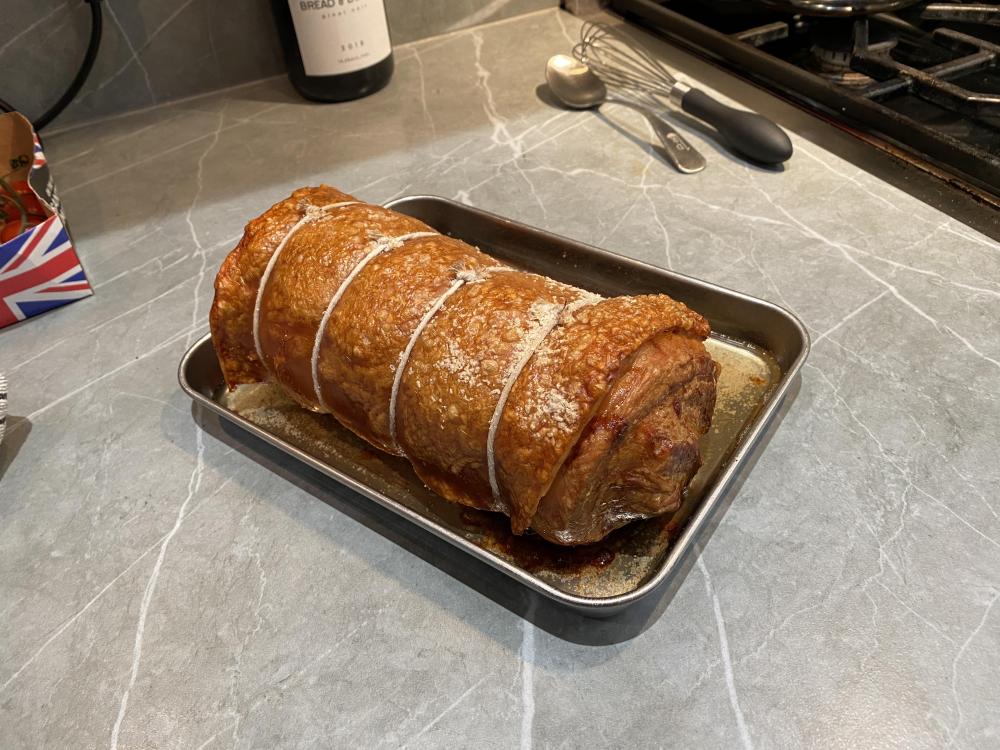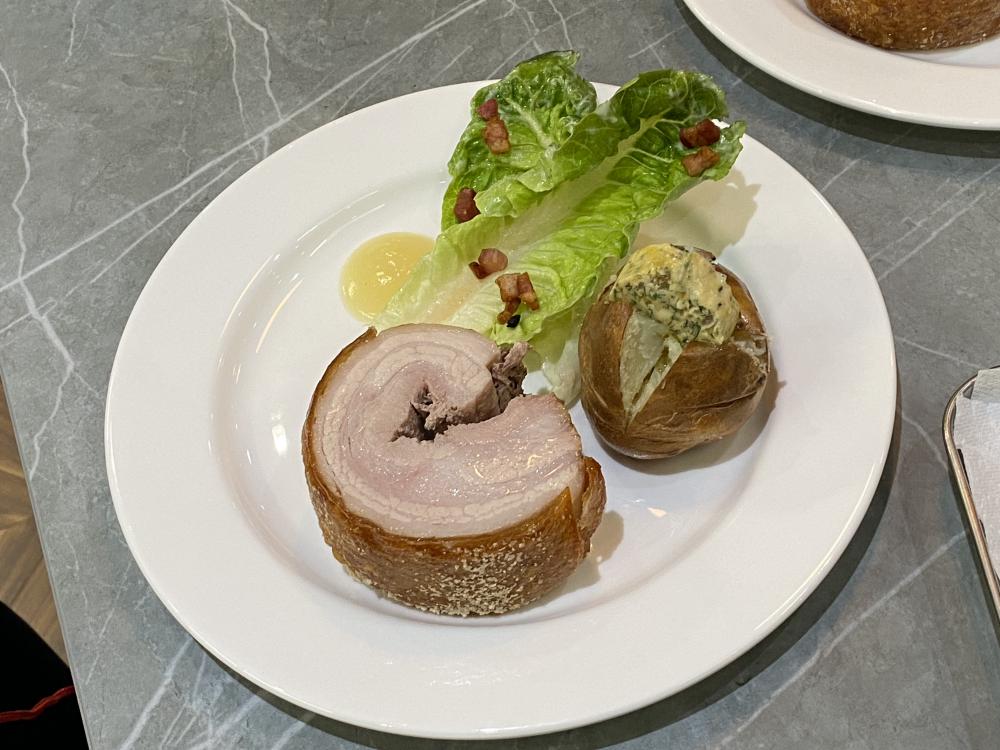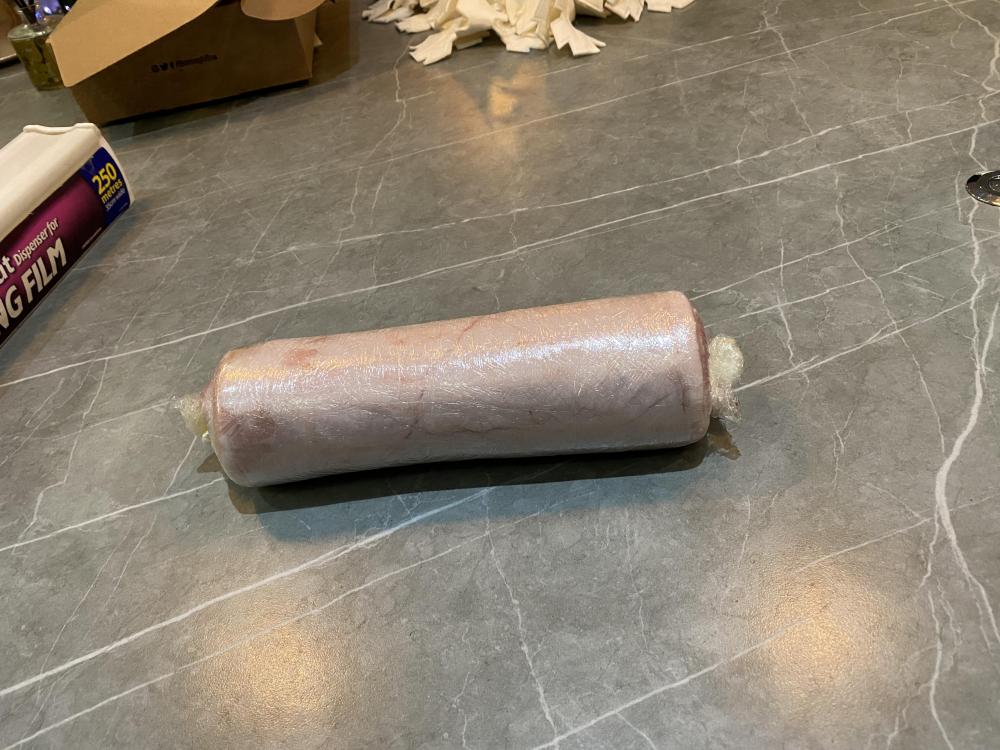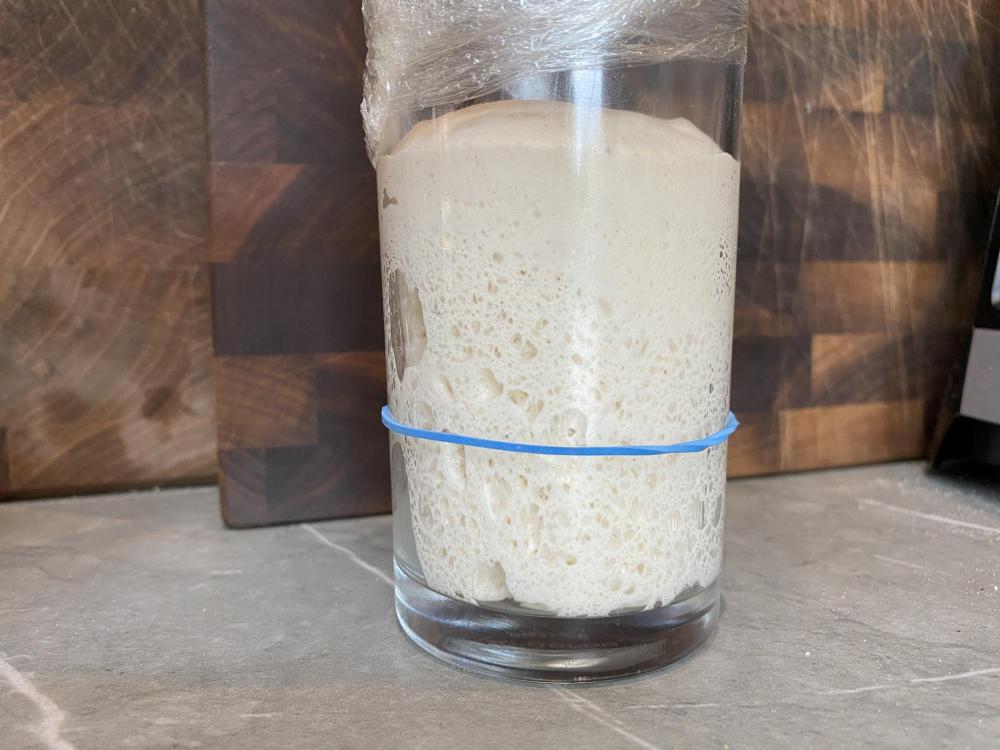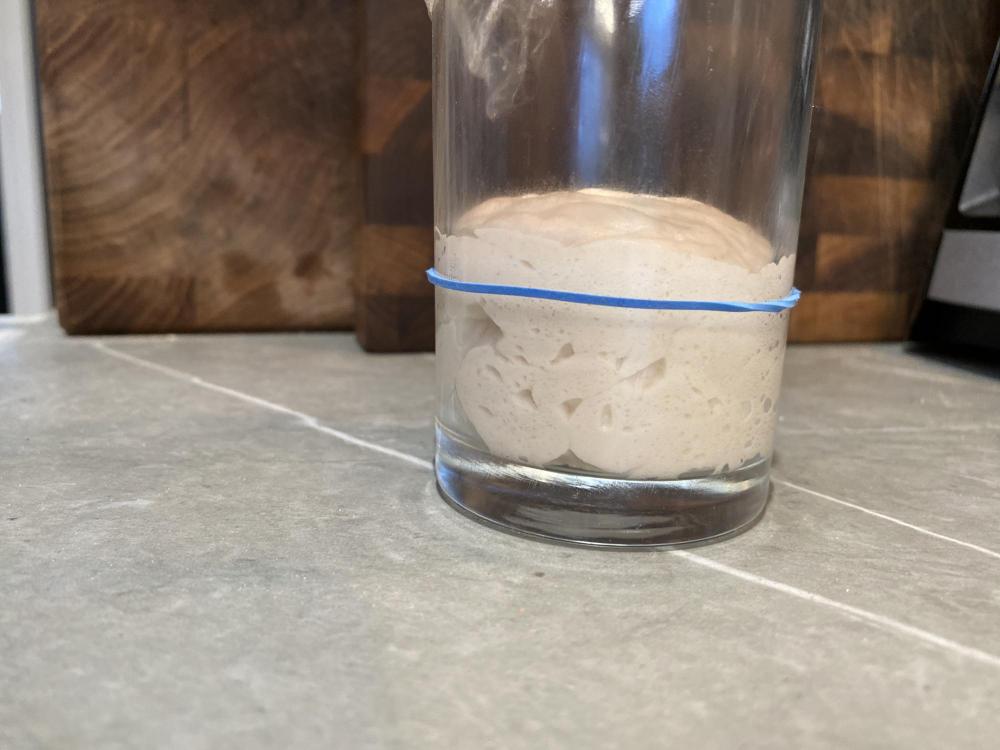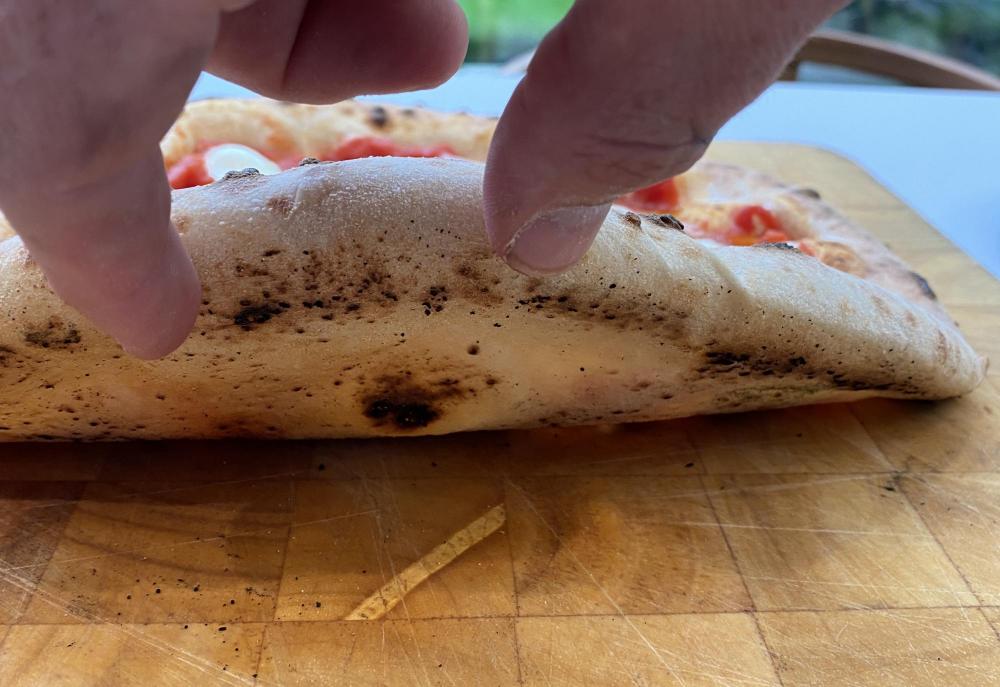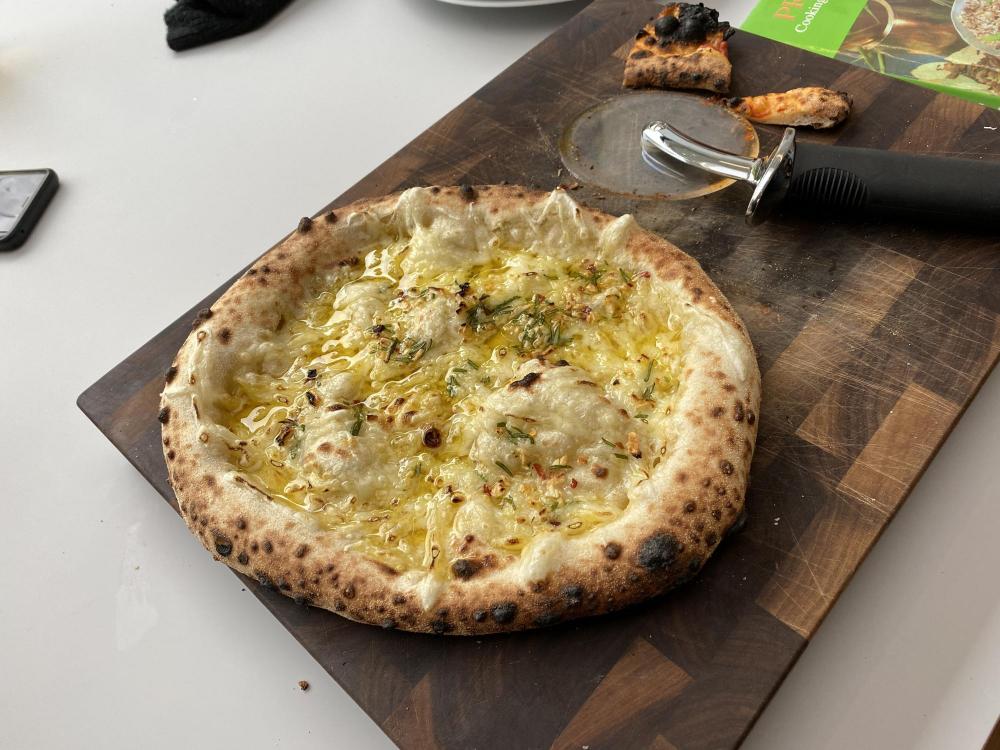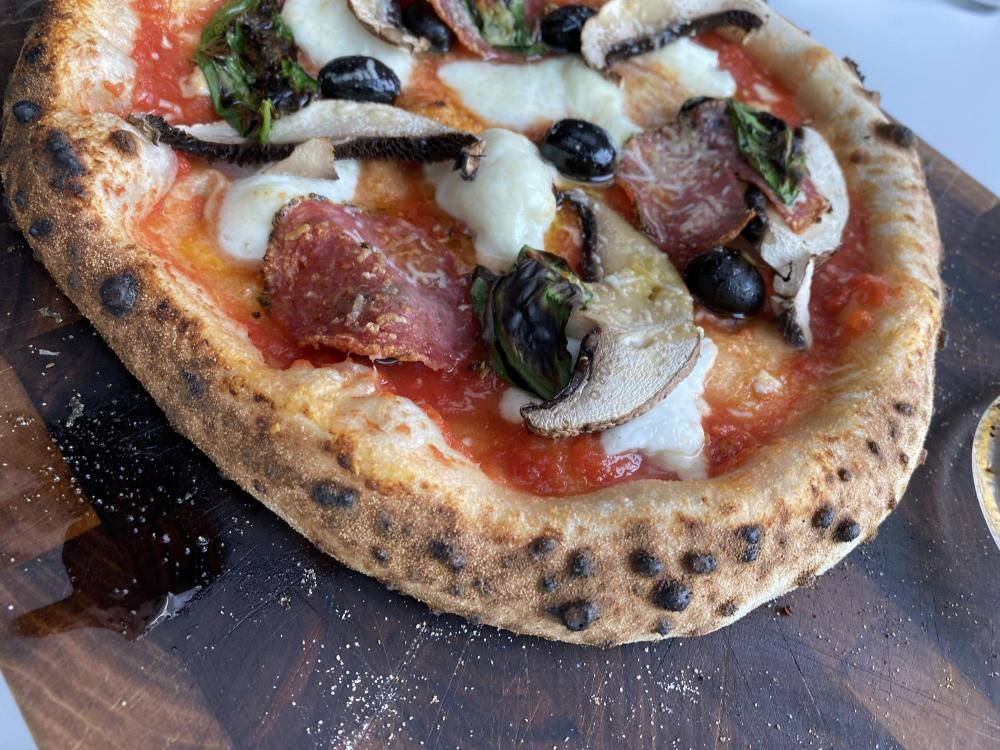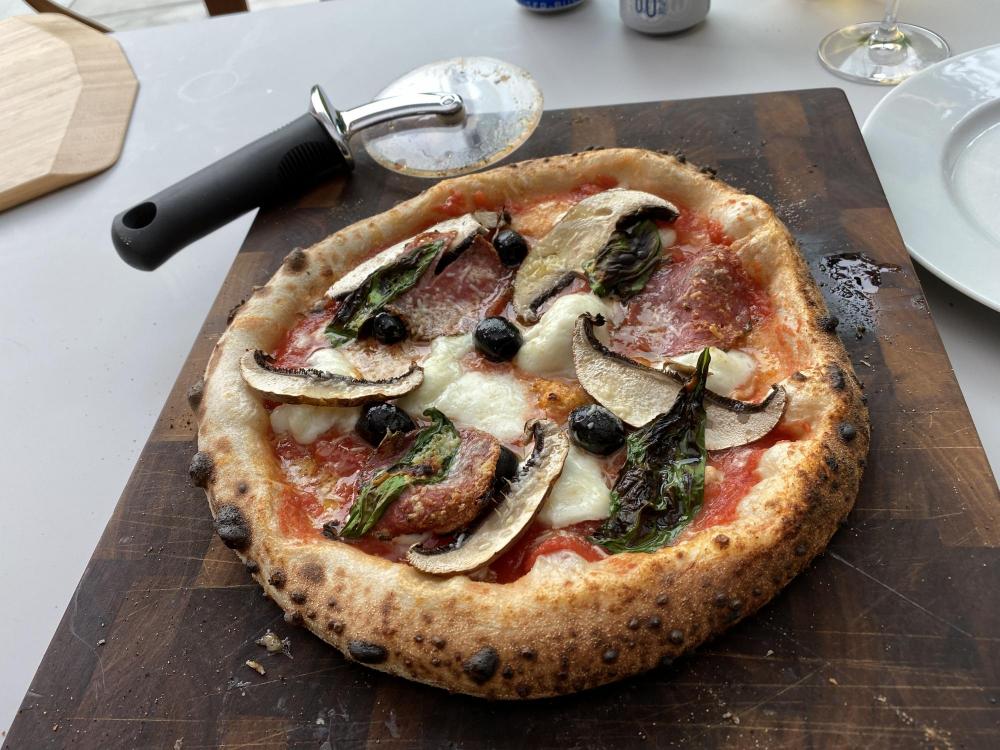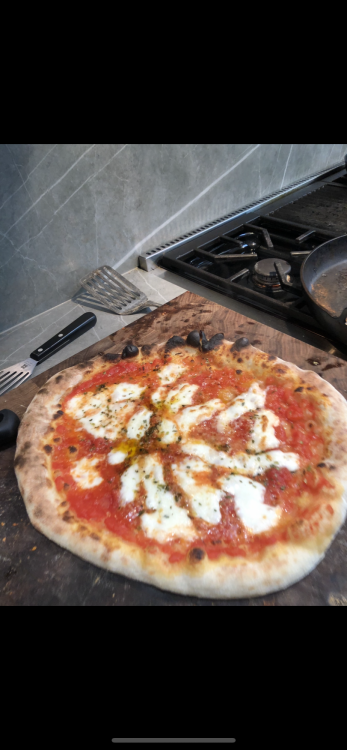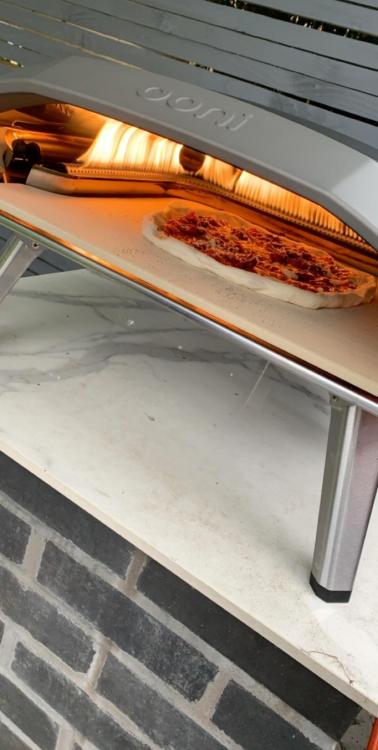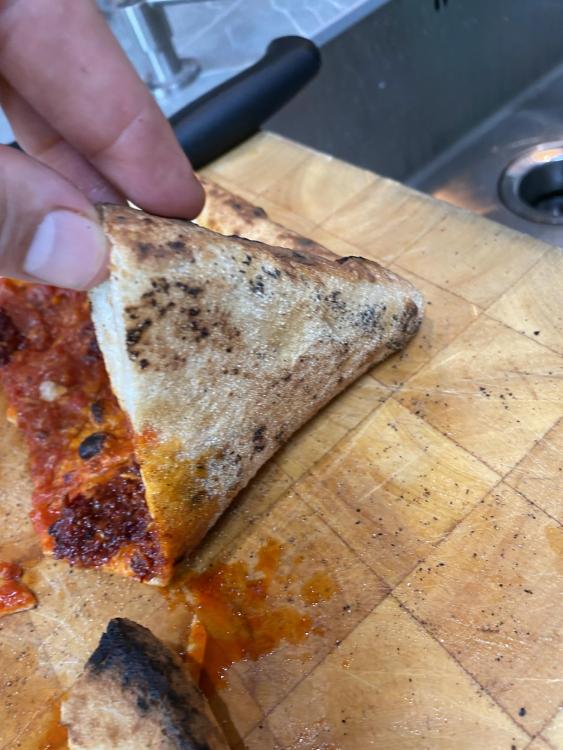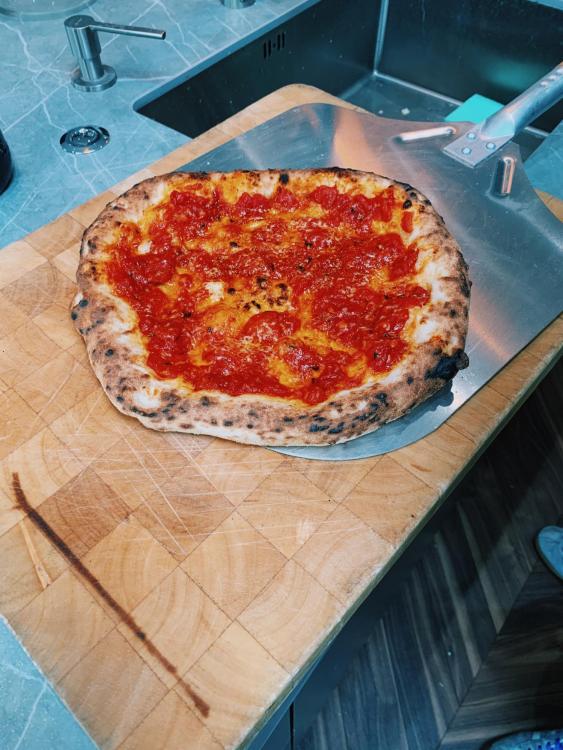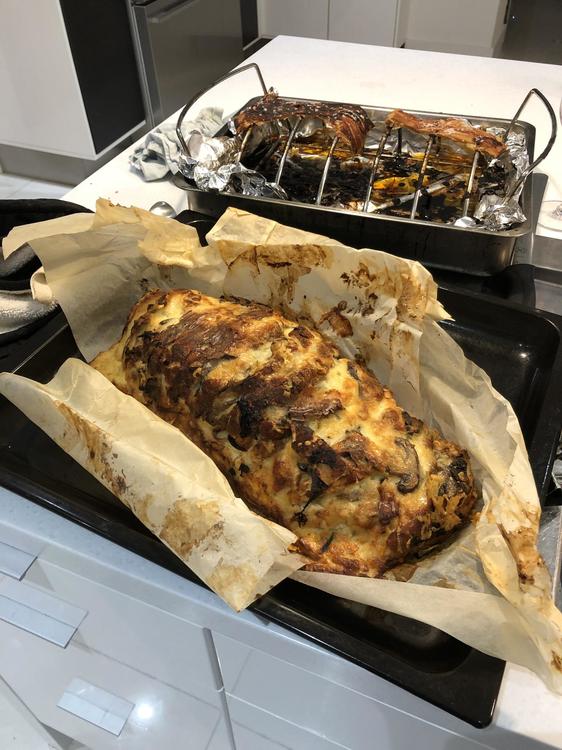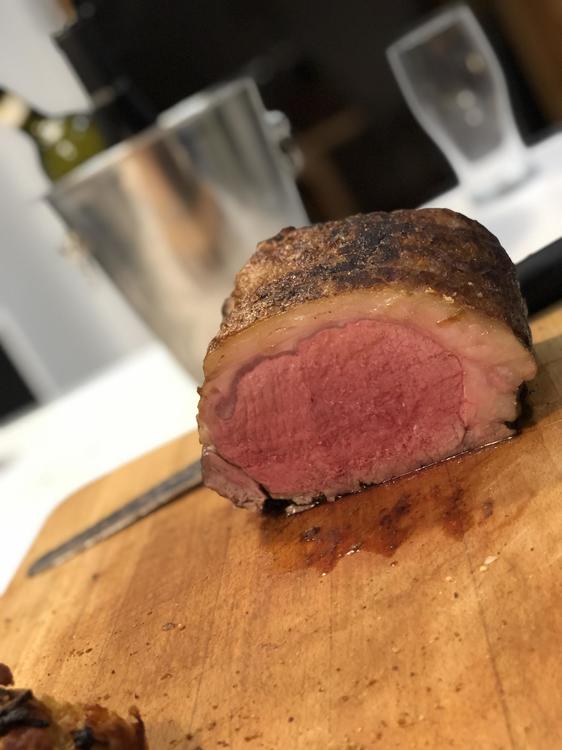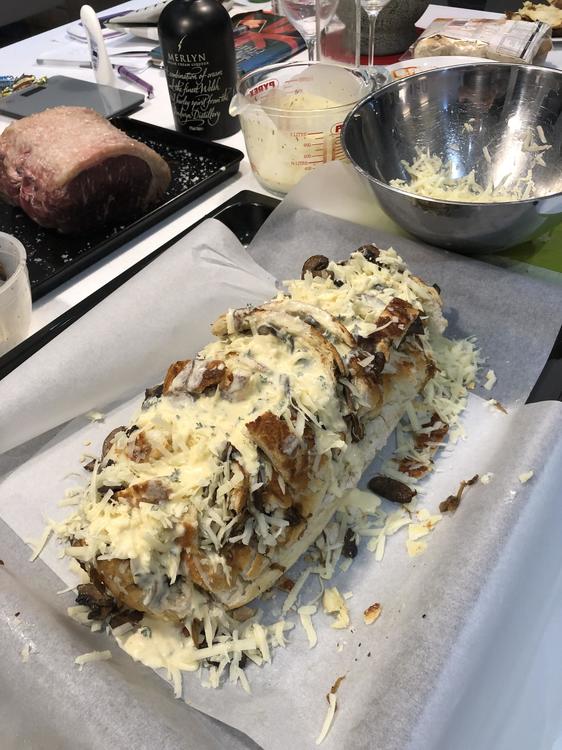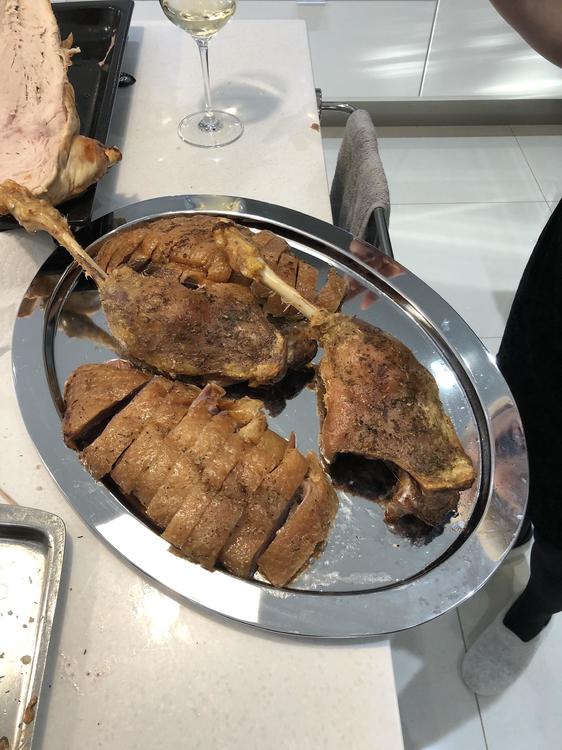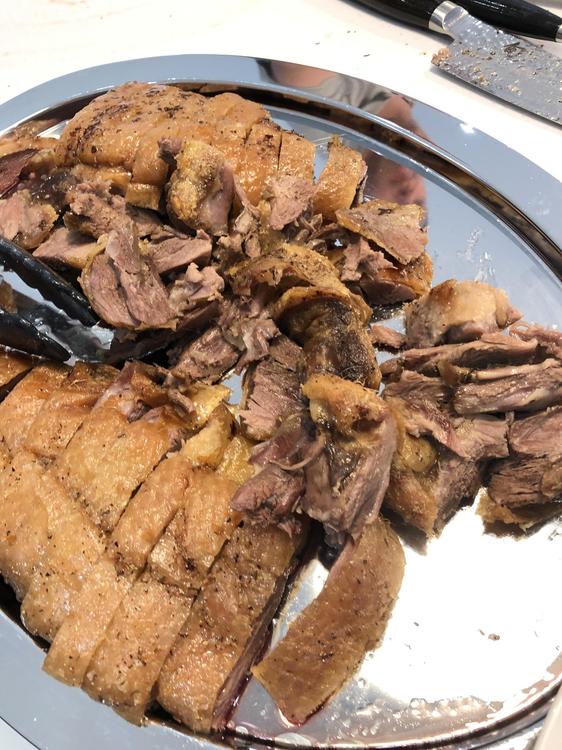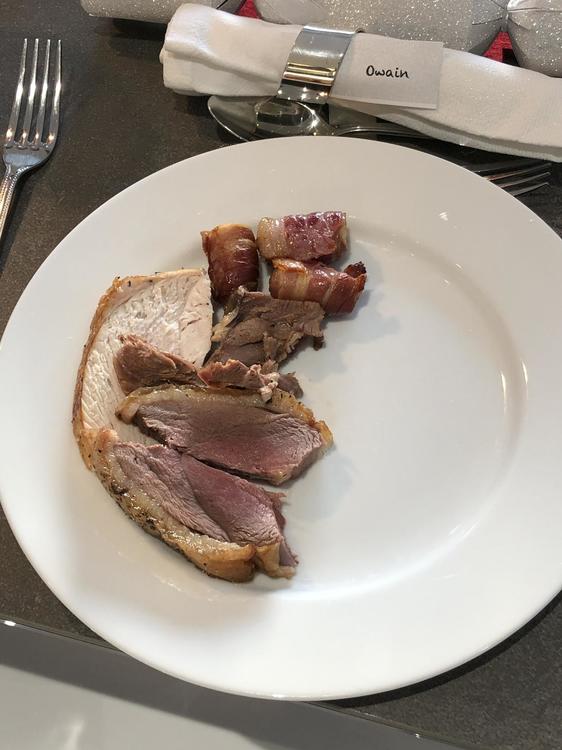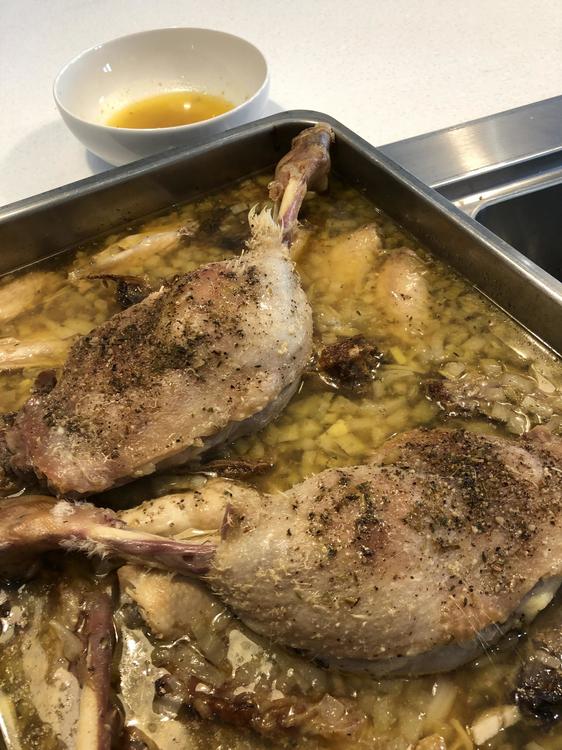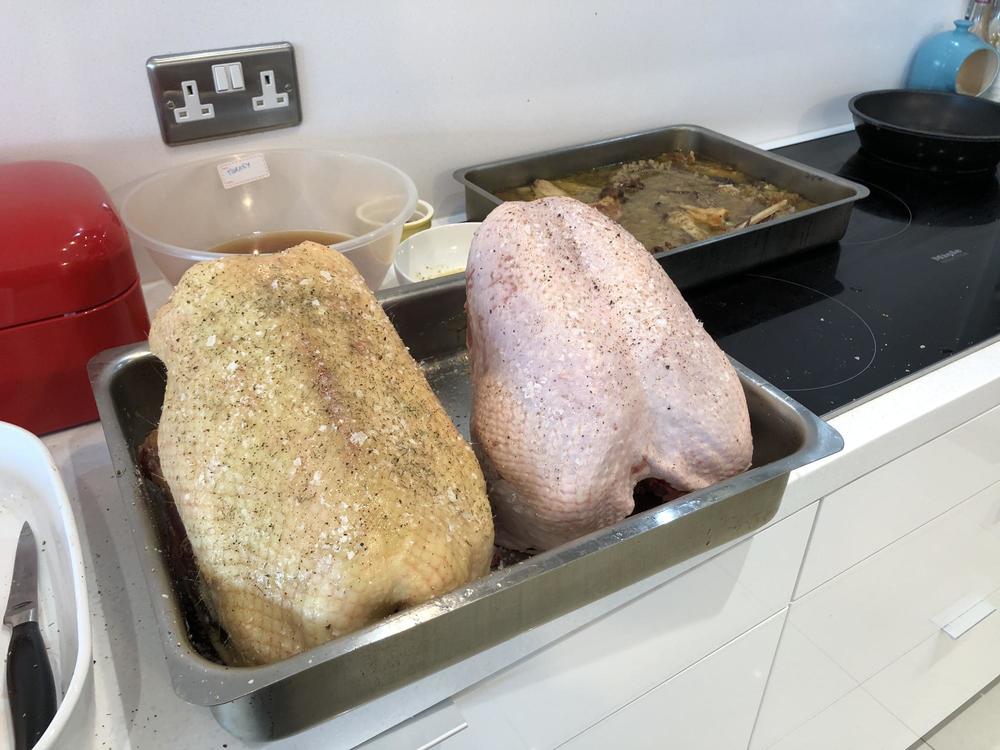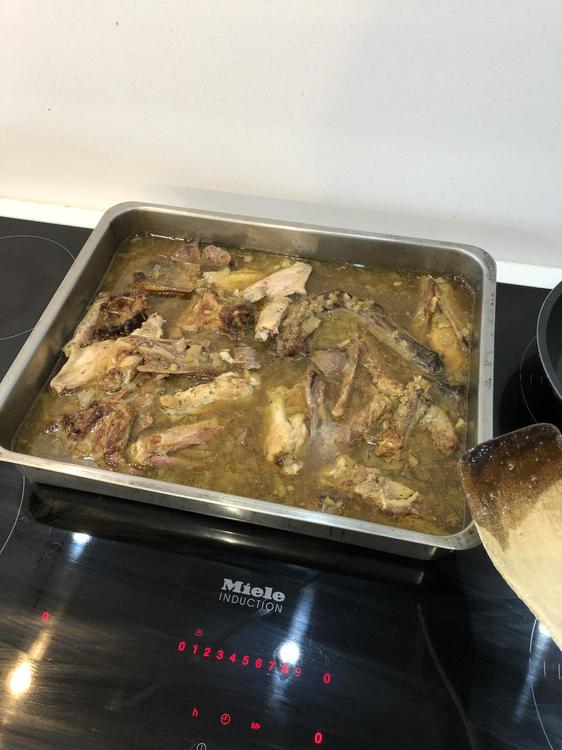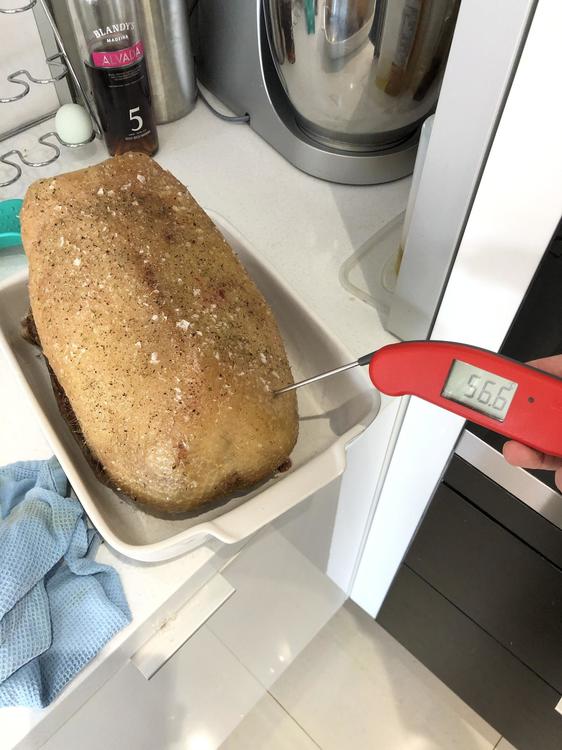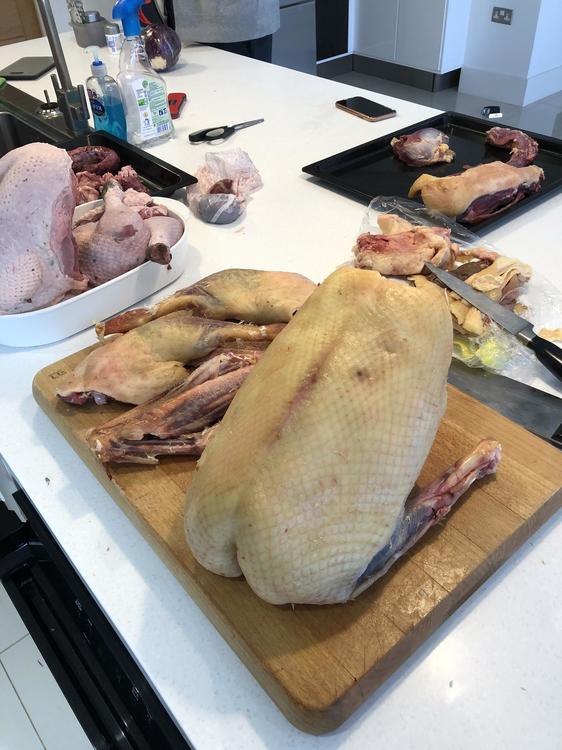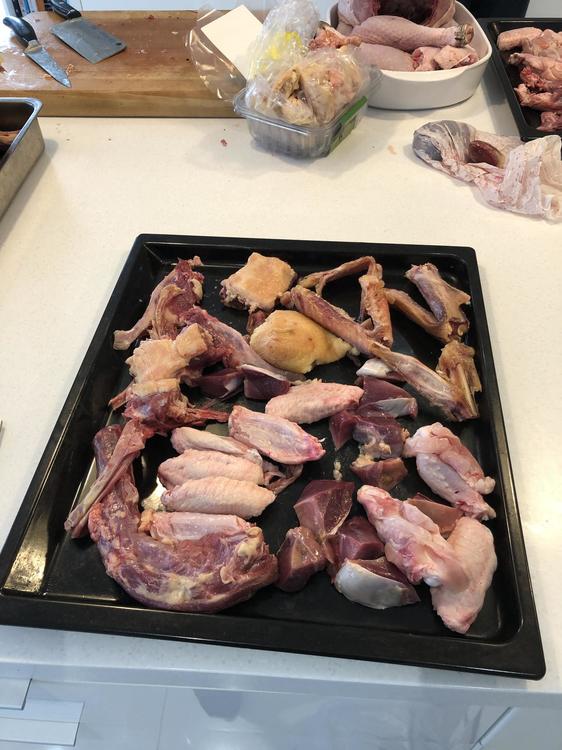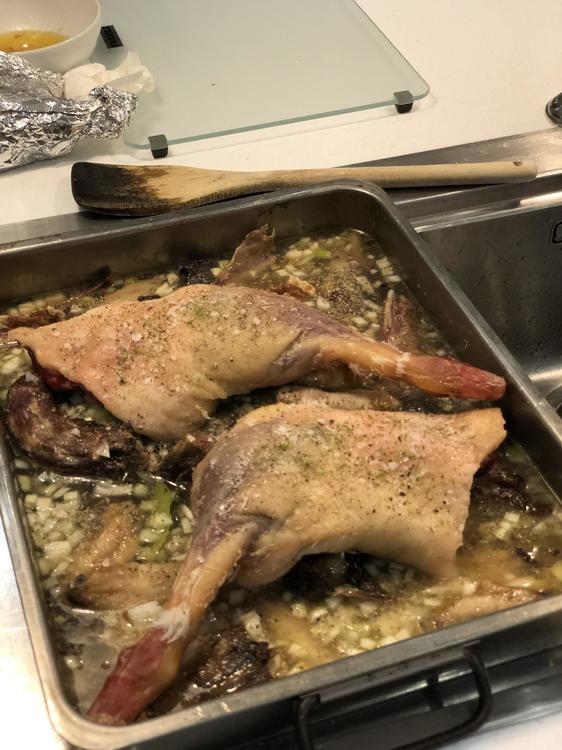-
Posts
588 -
Joined
-
Last visited
Content Type
Profiles
Forums
Store
Help Articles
Everything posted by &roid
-
Reporting back on the pork belly. Wow! What a recipe. Really enjoyed this. One day I’ll definitely try the whole thing but for now I’m really happy with the parts I did. the belly is super moist, the skin sticks really well once it’s rolled back up and it cooked evenly and quickly. The tartness of the apple purée was perfect, and I loved the salad cream.
-
he’s brilliant isn’t he. For all the reasons you say, a very very impressive chef and person. shame about the books, I’ve only made a couple of things out of this one but I love it already. His steak and chips dish took me the best part of nine hours but was so worth it. Every element was as good as I’ve ever made - fillet of beef, triple cooked chips, onion rings, a spectacular bernaise, cafe de Paris butter and an absolutely belting red wine sauce. the “hog roast” is a multi element pig celebration. I’m only doing the belly part and some of the sides today but the whole contains: - rolled and Sv belly - braised head meat croquettes - stuffed trotter - a salt crust bag of baked potatoes - little gem salad with salad cream - apple puree - pork sauce I’ll post a pic from the book later edit: just had a look and it seems the book is available in the US in the new year... or even on kindle right now... https://www.amazon.com/Hand-Flowers-Cookbook-Tom-Kerridge/dp/147293539X/ref=mp_s_a_1_1?dchild=1&keywords=hand+and+flowers+cookbook&qid=1608796206&sprefix=hand+and+flowers&sr=8-1
-
Today I’m starting a version of Tom Kerridge’s “hog roast” from his new hand and flowers cookbook. belly of pork rolled and SV for 8 hours at 70°, the skin in a separate bag done for 24 hours. Once they’re both cooked and chilled I’ll put them back together again ready to roast tomorrow evening.
-
Looking great @Ann_T how do you find it?
-
You’re going to love it! I’ve it used mine for a few weeks (been on a lower carb diet to shed the extra weight I’ve gained during lockdown!). Can’t wait to get it out again.
-
I have that exact same oxo one and it’s the best I’ve used. For me, the non-negotiable add on was a pair of Kevlar cutproof gloves. They cost all of £7 on amazon but have saved my hands more times than I can remember. https://www.amazon.co.uk/dp/B07FDQJVF2/ref=cm_sw_r_cp_api_i_FvMhFbR1FW434
-
Wow! Thanks for taking the time for such a detailed answer again 🙂👍 for logistical reasons I’ll have to go overnight this weekend but I’ll definitely look to do some shorter ones when time allows. the dough in the glass was simply pulled from the main dough straight after mixing. I guess this will have slowed it down some given it was such a low volume for all of its rise? I’ll do as you suggest and go for as short as possible overnight in bulk then ball up first thing in the morning. I could do the dough around 9-10pm then ball it around 8am with an aim to cook around 1-2pm. That would be 16 hours In total so maybe I should just go for the same yeast amount as last time and see where it gets me? Depending on how that goes I’ll try the 0.2% yeast and a much shorter rise next time out. I am - although this is definitely a work in progress! I think I’m starting to get the hang of it though and it definitely seems to make a nice job than other techniques I’ve tried. when I get this Neapolitan business a bit more sorted I’d like to have a go of NY style. I’ve seen some people get very nice looking results from a koda 16 with the gas control turned the wrong way to give more NY temperatures. That can wait for another day though!
-
A font of knowledge as always 🙂👍 yeast is saf laveur ADY from a 500g tub. It’s a few months old but is working well in other breads at the moment. the test ball had more than doubled overnight which I guess is a good thing? This pic was at just shy of 24 hours from first mixing. maybe I’ll try the exact same recipe again but with an overnight proof instead of 8-10 hours. I could mix the dough at 6pm then ball it up at say 10pm ready to cook at 1-2pm the following day...
-
For my latest round of experimenting I tried the VPN recipe that Scott posted upthread. 100% Red Caputo 61% water (30°C) 2.7% salt 0.05% active dried yeast This was intended for an eight hour rise but was probably closer to ten by the time I made the final (and best) pizza. They had 6 hours in bulk and then were balled for the remainder. @scott123, what’s the effect of different times in bulk vs. balled? Next time I’ll try upping the yeast slightly as the dough hadn’t risen much during its time today. I put a test ball in a cylinder when I made the dough to measure it better and it only grew around 20% in size: Still, we had to eat so I ploughed on. I was cooking these for 75 seconds with a floor temp of 480°C. My turning has got a little bit better so I managed a slightly more even bake. They were good, definitely more enjoyable than the caputo pizzeria flour ones from last week. And I feel like I’m getting better at judging the right amount of sauce to add. On the downside I would say they could have been a bit thinner in the base, I’m guessing with a bit more fermenting time or a bit more yeast I might have been able to stretch them better. Next time around I’ll keep everything else the same and just change that one thing to see what effect it has. still loving the ooni. It’s a great bit of kit to play around with.
-
This is a great book on the science behind a lot of bbq. It has recipes, but in the main is a great read on what’s actually going on when we cook meat over flames. Meathead Goldwyn For recipes and ideas I love this from British (heresy!) bbq restaurant, Pitt Cue Pitt Cue
-
They look great ovens Paul. For me, the simplicity and form factor of the koda 16 made it the preferred choice (plus it was £150+ cheaper!). But if someone wanted the versatility of being able to burn wood or charcoal as well the pro seems a good choice - sometimes a real fire is just more fun. I remain sceptical about the taste difference though, Rotuts. I’ve never eaten at Pepes (though funnily enough I was watching a video about their pizzas just yesterday), but I’ve seen plenty of evidence that the great taste of these high (650-750F a la pepes) and very-high (900+F as in the ooni or a Neapolitan wood oven) heat pizzas comes from temperature alone rather than fuel choice.
-
agreed, the ease of use of this unit was one of the big selling points for me - connect to gas bottle, turn the ignition and I’m cooking pizza in 20-30 minutes. I’m not even sure there’s that much smoke from a properly lit wood burning pizza oven... isn’t the temp way too hot for that?
-
Thanks, Scott, that is another amazingly helpful answer. Those links are great too. After following the thread you posted I read your thoughts on when the dough was ready to cook, I think this might have been part of my less than stellar results too. The emergency dough was super light and definitely felt ready to go, the 48 hour stuff only had about 2-3 hours out of the fridge and was a fair bit firmer feeling and less risen pre-shape. I’ll give your recipe a go next time and see where we get to. Thanks again for taking the time, it’s really helpful.
-
thanks Scott, that’s all really really helpful. My shaping technique is still a work in progress, probably a bit ham fisted right now so I’ll try going a bit more gently. the theory about the long ferment time breaking down the dough seems like it might be right though - despite being just 60% hydration compared to the 64% of the emergency dough, this one felt a lot wetter and stickier when I shaped it. For my next try I think I’ll go back to cuoco and a longer fermentation. Do you have a preferred method at the moment?
-
So it was a bit of a mixed bag yesterday, the pizzas looked quite good and the dough had a good flavour but I wasn’t really happy with the texture. I cooked six pies in total and, despite experimenting with different heat levels, they all had a bit of an underbaked gumminess to them. Overall they weren’t as good as the quick dough I did earlier in the week. I made too many changes to be 100% sure what impact each made - different flour, lower hydration (60% vs the 64% in the quick dough) and a 48 hour ferment.
- 302 replies
-
- 12
-

-

-
🤣 I was very surprised, I’d been looking for one for a while and had become increasingly resigned to not having it this summer. Then an ad on my google search made me check a store again that I’d looked at many times before - they suddenly had just a single unit available. I can only think it was a cancelled order or something. This was about 1am - for once I’m happy about targeted ads and insomnia! that’s really good to know, I’d not seen about the reformulation, what changed with it? Be interesting to see how they turn out this afternoon, do you reckon they’ll be ok with blue?
-
I was using 1/2” thick steel as in this post and it was decent enough. I got better results when I moved to caputo flour and started using a darto pan on my range top for the base followed by some time under the broiler. Total time for that method was around 30s on the gas burner followed by about 90 under the broiler. They were good pizzas but they were very hit and miss, it was hard to get the balance between base and top just right and my broiler was never quite even enough to do the whole pie without turning. This was probably the best example I did of that method, I really enjoyed it, but it wasn’t a patch on what the ooni gave me on its first try: And you’re spot on: the type of pizza I enjoy most and was desperately trying to make is Neapolitan. It’s possible to get somewhere in the ballpark of that with an indoor oven but in truth it’s just never going to be quite right. For flour I’m using caputo at the moment. The ones I made on Tuesday were cuoco, the batch I’ve started ready for tomorrow is made with blue.
-
You won’t regret it, wish we had your weather! the size is great, I’ve used a roccbox before and it’s much more accommodating. You’d have no problem with any type of pizza or flatbread, naan, etc. Focaccia would be fine too. In terms of non-bread cooking I’d say you could get to some roasted veg in a tray or maybe even a spatchcocked chicken at a push. Thicker than that and you might struggle a bit with proximity to the flames above when trying to cook evenly.
-
Definite room for improvement - I can get the cooking a little more even, hopefully with better dough the leoparding will be better - but I don’t think I’ve ever been this impressed with a brand new new cooking implement. MostLy, the first few times I try something I can see the potential but it’s a bit underwhelming, this was a big, big surprise. Especially with the “cheat” dough, I’m used to messing about with 24, 48, 72 hour ferments to try and get decent pizza in my indoor oven. Being able to come home from work and decide to make pizza for dinner is a game changer. “proper” dough got started tonight for a Friday cook - I shall report back
-
Surprised not to have seen more about these ovens on here. I managed to track down some stock (a single unit available) last week and had it delivered yesterday afternoon. I went for the larger 16” version. long story short, after just two pizzas I am blown away. I was going to wait and do them at the weekend but I got impatient so I knocked up an “emergency” dough in an hour or so. It utterly destroyed any pizza I’ve made indoors (pizza stone, pizza steel, modernist recipe, Neapolitan, stove top, cast iron, broiler, yada yada yada). the oven takes 20-30 minutes to get to 450°C in the centre of the stone and cooked my marinaras in around 70 seconds.
- 302 replies
-
- 10
-

-

-

-
thank you 😊 it’s my go to recipe for roast beef from Neil Rankin’s low and slow book. The truth is it’s stupidly easy and almost completely foolproof: Salt the meat a few hours before then get a pan as hot as possible and brown the outside of the roasting joint. Get all of the meat nice and brown but turn it often and spend no more than ten minutes doing it. Fridge cold is best to protect the meat inside. once that’s done it just goes into a 120°C oven until the internal temp gets to where you want it. I pulled this one out at 54°C IIRC. Leave it for 20 minutes to rest and you’re good to go.
-
Boxing Day good for us involved a roast sirloin of beef and a pain surprise. This latter is a new one for me but something I think I’ll make many more times in the future. Essentially it’s a loaf of bread which is cut like a hassleback potato then stuffed with the following: sautéed mushrooms caramelised onions (done ridiculously slowly a la thomas Keller) slices of baked potato flesh gruyere cheese a savoury custard made with creme fraiche and a couple of eggs with some thyme leaves The whole thing is wrapped in paper and baked for 30 minutes before unwrapping and giving it another 10 minutes to gratinate. It’s delicious, not exactly light, but delicious!
- 148 replies
-
- 11
-

-

-
Late update, as predicted the champagne and claret took over 😚 Turned out to be the best goose we’ve had. Cooking the dark meat and breast separately worked very well. It took another 20 minutes or so in a 250°C oven to crisp. Sauce was a Madeira and cassis reduction and got rave reviews. I’ll definitely be making this again next year.
- 49 replies
-
- 10
-

-

-
Christmas morning update: To tie in with our turkey better I’ve split the cooking of the legs and the crown into two separate parts. The legs were cooked really nicely after 2.5 hours at 120°C convection. I’ve pulled them out, continued to simmer the stock a little longer then sieved and defatted it. The legs I’ve wrapped in foil and will come back to later. The crown went in at 10am (again on 120°C convection) and took 90 minutes to get up to temp. I was aiming for 54°C as per the Raymond blanc recipe but overshot slightly to 56.6°. The crown is resting now (while our turkey crown continues to cook) and will get a blast at 250°C just before we’re ready to eat. Merry Christmas everyone!
- 49 replies
-
- 10
-

-

-

-
Ours is underway too. So far I’ve broken it down into legs, a crown and some carcass pieces. The carcass has been roasted with some chicken wings, the neck and the gizzard: The legs are now sitting atop the browned carcass, with some bay, thyme and salt. They are set to start cooking at 6am for about 2-2.5 hours at 120°C: The presents are all under the tree so I’m away to bed, hoping I’ve been good this year



